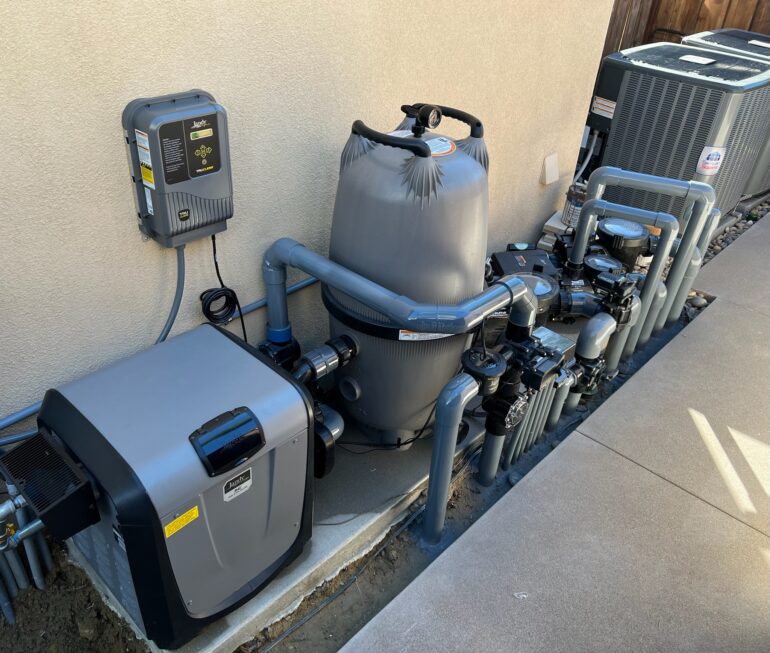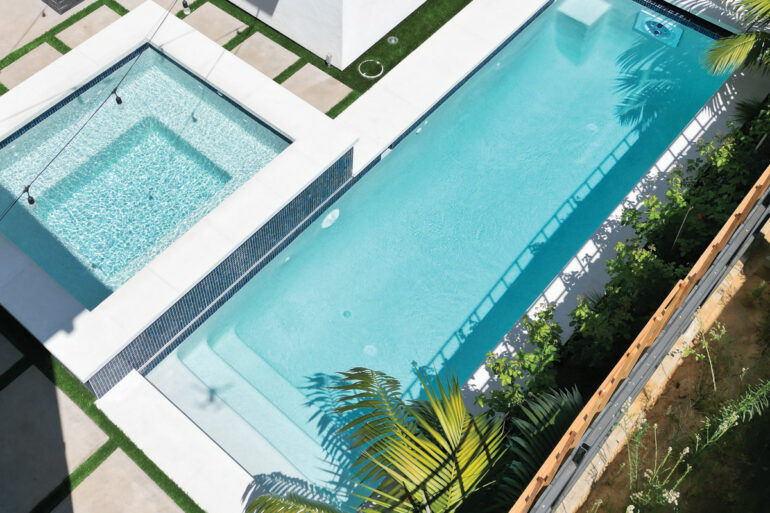Variable-Speed Upgrades
Dual-voltage capability and two auxiliary relays mark Jandy pump changes

Rocco Russo is a national trainer for Zodiac Academy, a service provided by Fluidra, which hosts a series of weekly hands-on technical training workshops across North America.
Russo and his fellow instructors teach product installation, service, repair and troubleshooting, and when the Carlsbad, California, manufacturer launches new and improved products, they teach pool pros the features and benefits.
Since late summer, the classes have been focused on three variable-speed pumps bearing the Jandy brand: VS FloPro 1.85 HP, VS FloPro 2.7 HP and VS PlusHP 2.7 HP.
The VS FloPro 2.7 HP and VS PlusHP 2.7 HP pumps have been upgraded, while the VS FloPro 1.85 HP is new. All three give professionals and homeowners more flexibility with pool pad setup by offering several installation possibilities, and provide an answer to a federal regulation mandating the use of variable-speed pumps by 2021.
Russo says the 30 or so installers and service technicians in each of the classes have been excited for what they’re learning about the equipment, specifically the multiple ways there are to run the pumps.
“We have the ability to operate additional components through speed programming, so the exciting part is that the pumps will now fit into more applications,” Russo says, “especially when the mandate takes effect, giving service guys more opportunities to upsell homeowners into variable speed.”
All three pumps have a new variable-speed foundation, with features including auto-sensing dual voltage power options at 115 and 230 volts, and two independent auxiliary relays to run additional pool equipment with no need for separate timing mechanisms.
Steve Jones, product manager for hydraulics at Fluidra, says the pumps can automatically sense whether they are connected to 115 volts or 230 volts, so if a service provider visits a homeowner who’s having trouble with a single-speed pump and has one of the new pumps in his truck, it’s an easy replacement.
“[The pros] can take that VS FloPro and operate it at either voltage and get the pool up and running before it turns green,” Jones says. “It can fit in tight places, and it operates at both voltages.”
Jones says the VS FloPro 2.7 is the company’s smallest pump. Before the upgrades, it was a medium-head pump used for light duty, like the basic filtration of smaller pools. But customers requested it become a high-head pump, or high-performing pump, that can complete multiple tasks like filtration, spa jets and light features.
“We did a complete redesign of the wet end to give it higher head pressure and higher flow rates, so it’s now our smallest pump and highest performing pump as far as head pressure and flow rates are concerned,” Jones says. “[It’s] a big upgrade for our customers with smaller pool pads.”
The company says the upgraded VS FloPro 2.7 produces a 20% increase in hydraulic performance. Jones says the two auxiliary relays will add flexibility; one relay turns on when the pump speed hits 1750 rpm and the other at 2250 rpm.
For example, a pro can set up a saltwater chlorination system on the 1750 rpm relay and not worry about programming it, Jones says. When the pump hits 1750 rpm, the relay completes the power connection to the saltwater chlorinator and it automatically turns on.
“[It’s not only convenient], but it also removes the risk of having the saltwater chlorinator operating when there’s no flow, which can create excessive gas within the piping and can damage equipment within the pool equipment system,” he says.
When the pump reaches 2250 rpm, the second relay will turn on whatever is connected to it, says Jones, adding that Jandy recommends a booster pump for the second relay because the booster pump needs additional flow to drive the automatic pool cleaner.
“There’s no need to program anything different, no need to have a separate time clock that tells the booster pump when to go off and on,” Jones says. “You simply program the variable-speed pump to operate for one or two hours a day above the 2250 rpm limit and now your booster pump runs and you don’t even need to worry that the equipment may go out of sync if there’s a power outage.”
Two more features of the pumps include a larger compartment for wiring and zero clearance, meaning the motor draws cooling air from the side rather than the back, making installation in tight spots easier.
The all-new VS FloPro 1.85 has the same features as the VS FloPro 2.7 HP. Jones says its creation was a response to customers asking for a pump in that horsepower range, and that the VS PlusHP 2.7 boasts a 40% larger basket than comparable pumps.
Russo says that in addition to the flexibility the pumps offer pool pros, the pumps can provide energy savings for homeowners. He says the decrease in energy consumption comes from proper programming of the variable-speed pump, not simply the replacement of a single-speed pump with a VSP.
“If we can get [pros] to utilize the pump the way it’s supposed to be through programming,” Russo says, “then we’ll really make a difference in energy consumption with our industry.”
“The direct final rule for dedicated-purpose pool pumps published on January 18, 2017 (82 FR 5650) became effective on May 18, 2017. Compliance with the dedicated-purpose pool pumps standards in the direct final rule will be required on July 19, 2021.”
U. S. Department of Energy
Code of Federal Regulations
Read more: bit.ly/VSPmandate






